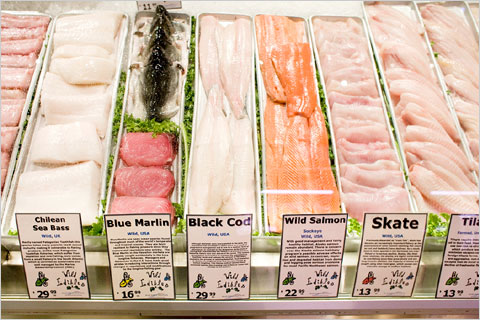Choosing Safer, Sustainable Seafood
By Tara Parker-Pope
 Gianni Cipriano for The New York Times
Gianni Cipriano for The New York Times
Shopping for fish these days is tough. Sure it’s good for your heart and brain, but how do you know if it’s low in mercury and other toxins? And once you settle on a healthful fish, is buying it also good for the planet?
Seattle food writer Kim O’Donnel wades through the murky waters of fish consumption over at True/Slant with “Sustainable Seafood 411,” a helpful primer on choosing earth-friendly, safer fish. Here are her suggestions.
Choose:
Low on the food chain seafood like sardines, anchovies, clams, mussels and oysters. These have “shorter life spans, reproduce more readily and as a result are more resilient to fishing pressure.”
Wild salmon from Alaska and smaller albacore tuna from the Pacific Northwest and British Columbia, which are both relatively well-managed fisheries.
A variety of fish to reduce your exposure to contaminants common to one particular type.
Eat less:
Big predatory fish like swordfish, tuna, shark and salmon (exceptions noted above). High-on-the-food-chain fish accumulate the most toxins.
Don’t eat:
Yellowfin, bluefin and big eye tuna. They are overfished and nearing extinction.
Imported farmed shrimp. Environmental standards are inconsistent and unregulated.
Farmed salmon. Often sold as Atlantic salmon, you’re buying fish raised in crowded and unhealthful conditions.
Freshwater eel. No more unagi at the sushi bar. It’s almost fished to extinction.

